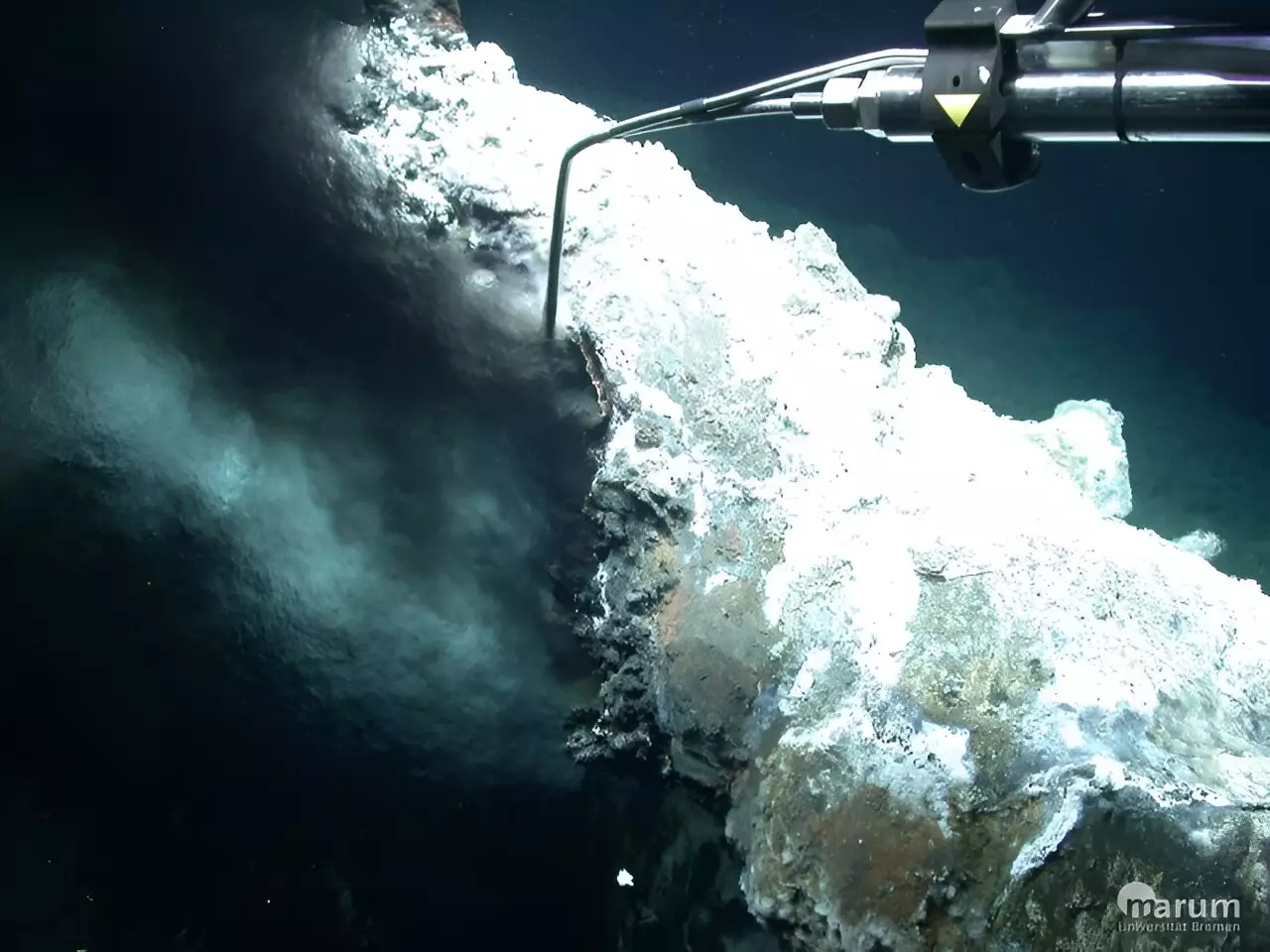The exploration of hydrothermal vents has always been a fascinating subject for researchers around the world. These vents are located at the junctions of drifting tectonic plates and are known for the unique ecosystems that thrive in their vicinity. Recently, a team of international researchers led by Prof. Dr. Gerhard Bohrmann made a groundbreaking discovery on the 500-kilometer-long Knipovich Ridge, off the coast of Svalbard. This discovery, named the Jøtul Field after a giant in Nordic mythology, sheds new light on hydrothermal activity on slow spreading ridges and its impact on the environment.
Hydrothermal vents are seeps on the sea floor from which hot liquids escape, enriched with minerals and materials dissolved out of the oceanic crustal rocks. The newly discovered Jøtul Field on the Knipovich Ridge is located at water depths greater than 3,000 meters. The remote-controlled submersible vehicle MARUM-QUEST was used to take samples from this field, revealing very high concentrations of methane in the fluid samples. Methane emissions from hydrothermal vents play a significant role in the interaction of magma with sediments and have implications for both ocean acidification and climate change.
The presence of methane in the fluid samples from the Jøtul Field highlights its climate significance. Methane is converted into carbon dioxide as it travels through the water column, increasing the concentration of CO2 in the ocean and contributing to acidification. Furthermore, when methane interacts with the atmosphere, it acts as a greenhouse gas. Studying the amount of methane that escapes into the atmosphere from the Jøtul Field is crucial for understanding its impact on the environment and climate.
In addition to its environmental significance, the Jøtul Field offers a unique opportunity to study the organisms living in this extreme environment. In the absence of sunlight for photosynthesis, chemosynthesis becomes the basis for life in hydrothermal vent ecosystems. Specific organisms in symbiosis with bacteria thrive in these environments, providing valuable insights into the adaptability of life forms to extreme conditions. Further research into the biological diversity of the Jøtul Field is essential for expanding our knowledge of these ecosystems.
To build upon the discoveries made at the Jøtul Field, a new expedition of the MARIA S. MERIAN led by Gerhard Bohrmann is planned for late summer of this year. This expedition will focus on exploring and sampling as yet unknown areas of the Jøtul Field to gather more comprehensive data. By comparing the data from the Jøtul Field with other known hydrothermal fields in the Arctic province, such as the Aurora Field and Loki’s Castle, researchers can gain a better understanding of the similarities and differences in these ecosystems. The Jøtul Field will continue to be a key object of future research in the Cluster, contributing to our knowledge of hydrothermal vents and their impact on the environment.
The discovery of the hydrothermal vents on the Knipovich Ridge marks a significant advancement in our understanding of these unique ecosystems. The Jøtul Field’s location on a slow spreading ridge, coupled with its high methane concentrations, presents valuable research opportunities for studying the environmental and biological aspects of hydrothermal vent systems. By conducting further expeditions and gathering more data, researchers can unravel the mysteries of the Jøtul Field and expand our knowledge of hydrothermal vent ecosystems in the Arctic region and beyond.


Leave a Reply